Health and Safety Training For Managers
Quantity: 1

Duration 8-10 hours
Last audited 24th April 2024
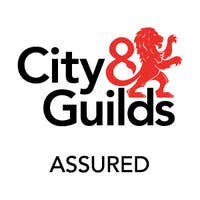
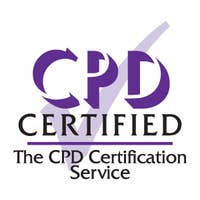
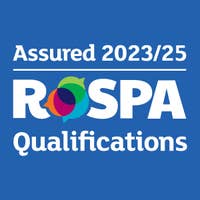

100% online training
Start when you like
Learn on any device (desktop, mobile or tablet)
Instant assessment and result
1 learner per course
Train teams of all sizes
Bulk discounts starting at 10% off 10 courses
Pay by invoice with 30 day payment terms available (5+ courses)
Includes a 10% discount for 10+ courses
This Health and Safety for Managers training course provides employers, managers, and supervisors with a thorough understanding of key health and safety topics, including the work environment, fire safety, work equipment, COSHH, manual handling, and many more.
The course goes into detail about each area of health and safety that your business may encounter and provides information on how to undertake effective risk assessments and implement relevant, sufficient, and appropriate control measures. The course gives an in-depth guide to health and safety legislation and aims to raise awareness of the responsibilities that all managers and supervisors are expected to maintain.
100% online training
Access anywhere
Same day digital certificate
Printed certificate posted next working day
Full audio voiceover
Assessment retakes at no extra cost
Written in compliance with UK legislation and guidance
Developed by health and safety professionals
City & Guilds Assured
Accredited by CPD and assured by RoSPA Qualifications
Bulk discount for orders of 10+ courses
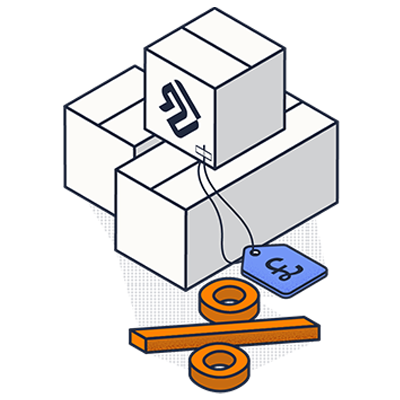
Save on our courses when you buy more training upfront. Lock in a better price now and access the training whenever you need to. You can mix and match any of our courses too and get the discount off your whole order.
10+ courses = 10% off
50+ courses = 20% off
100+ courses = 30% off
500+ courses = 40% off
Upon completion of this training, you will understand:

City & Guilds Assured
Thoroughly reviewed independently by City & Guilds learning and development experts, this course is approved as City & Guilds Assured. High Speed Training is the first e-learning provider to have online courses awarded City & Guilds Assured status.
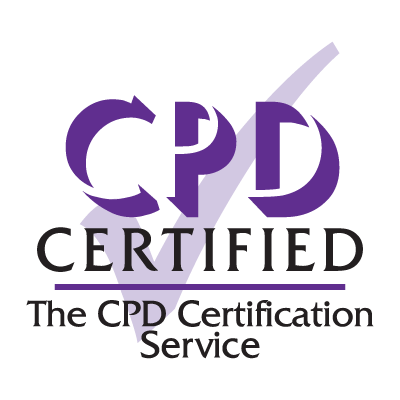
Accredited by CPD
All of our courses are accredited by the CPD Certification Service as conforming to universally accepted Continuing Professional Development (CPD) guidelines.
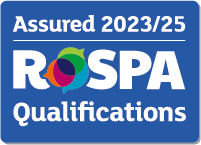
Assured by RoSPA Qualifications
This course is also assured by the Royal Society for the Prevention of Accidents through their RoSPA Qualifications Assurance System, as providing up-to-date, quality and content-approved training.
Recommended renewal:
3 years
What does this mean? This certificate does not have an expiry date, however, based on industry best practice guidelines there is a recommended renewal period.
Our in-house Learning Designers develop all of our courses to give you and your learners the most engaging training possible.








Why is health and safety at work important?, what are hazards and risks?, health and safety legislation, the Health and Safety at Work etc. Act 1974 (HSW Act), the Management of Health and Safety at Work Regulations 1999 (MHSWR), the role of managers and supervisors, active monitoring, reactive monitoring, employee responsibilities, and the Health and Safety Executive.
Key concepts, who should carry out risk assessments?, the five steps in the risk assessment process, the hierarchy of control, safe systems of work, information, instruction, and training, and personal protective equipment.
What is a safe work environment?, safe means of access and safe places of work, lighting, ventilation, and temperature, welfare provision, slips, trips, and falls on the same level, causes and prevention of slips, trips, and falls on the same level, preventing slips, trips, and falls on the same level, display screen equipment (DSE), what are the health risks of DSE work?, how to position DSE, employer duties for DSE, DSE assessments, and employee training for DSE use.
Why fire and explosion safety is important, definition of fire safety at work and the hierarchy of fire protection, the fire triangle, types of fires, duties of employers and other duty holders, legal duties under the fire safety orders, duty to carry out a fire risk assessment, fire wardens, the Dangerous Substances and Explosive Atmospheres Regulations (DSEAR) 2002, risk assessments under DSEAR, general safety measures under DSEAR, explosive atmospheres, relationship between DSEAR and the fire safety orders, and fire and explosion prevention measures.
Fire detection and warning systems, fire extinguishers and fire blankets, fire evacuation routes and signs, emergency plans and procedures, evacuation procedures, evacuation procedures for vulnerable people, emergency arrangements for dangerous substances, and fire drills.
What is a hazardous substance?, where are hazardous substances used or found at work?, legal requirements, what is COSHH and who has duties under it?, other specific regulations for hazardous and dangerous substances, statistics on ill health and hazardous substances, ill-health effects of hazardous substances, risk assessments for hazardous substances, identifying the hazards, COSHH control measures, elimination and substitution, engineering controls, safe systems of work, personal protective equipment (PPE), storage, transport, handling, and use, maintenance, examinations, and testing, monitoring exposure in the workplace and WELs, information, instruction, and training, health surveillance, and accidents, incidents, and emergencies.
What is PUWER?, what work equipment does PUWER apply to?, related legislation, requirements of PUWER, instructions, information, and training, the main risks from work equipment, machinery safety, the hierarchy of control, selection of work equipment, conformity of work equipment, specified hazards set out by PUWER, initial safety checks, strength and stability, location of work equipment, safe working loads of work equipment, machinery safety - guards, power presses, and other specific risks.
Work equipment controls, signage, equipment storage, other hazards to consider, inspection of work equipment, pre-use checks and inspection of work equipment, what inspections are required by PUWER?, who can carry out inspections?, examinations and inspections of work equipment, records of inspections, maintenance of work equipment, who should carry out maintenance and how?, how often should maintenance be carried out?, inspection and testing of hired equipment, health and safety when carrying out maintenance, safe systems of work, mobile work equipment, housekeeping, training and communication, and emergency procedures.
Noise at work, health and safety risks, the Control of Noise at Work Regulations 2005, duties of manufacturers, suppliers, and importers, estimating exposure to noise, exposure limit values and exposure action values, risk assessments, identifying the hazards, noise control measures, the hierarchy of control, elimination, substitution, engineering controls, administrative controls, purchasing policies, information, instruction, and training, health surveillance, hearing protection and hearing protection zones, types of hearing protection, and actions to take if noise is affecting employees' hearing.
Vibration at work, ill health from vibration, the Control of Vibration at Work Regulations 2005, vibration exposure values, duties of manufacturers, suppliers, and importers, risk assessments, identifying the hazards, vibration control measures, the hierarchy of control, elimination, substitution, engineering controls, maintenance and use of machinery and equipment, administrative controls, purchasing and hiring policies, information, instruction, and training, employee responsibilities, health surveillance, and personal protective equipment (PPE).
What is work at height?, why is working at height safety important?, risk assessments, the hierarchy of control for working at height: avoid, prevent and minimise, mobile towers, mobile elevating work platforms (MEWPs), low level access platforms, protective work equipment, safety nets and soft landing systems, personal mitigation equipment, the Work at Height Regulations, the Health and Safety at Work etc. Act 1974, ladders and stepladders, fragile surfaces, selection of equipment for working at height, inspections of equipment for working at height, training and communication, and emergency procedures.
Description of vehicles and workplace transport, legal responsibilities, risk assessment, identifying the hazards, worksite control measures, traffic routes, temporary traffic routes, traffic calming measures, speed limits, worksite visibility, worksite lighting and pedestrians, signs, signals, and markings, parking, safe parking practices, visiting drivers, vehicle standards, vehicle design requirements, carrying hazardous and dangerous substances on vehicles - case study, and vehicle maintenance.
Ensuring safe drivers and operators, checking of competence, driver training, driver training - reversing, vehicle movements - case study, traffic marshals, workplace transport safety - safe practices, loading and unloading, loading and unloading areas, safe use of outriggers, coupling and uncoupling, safe tipping operations, avoiding overturns, working at height on vehicles, practical steps for working at height on vehicles, and means of access to vehicles.
Why is electrical safety important?, common causes of electrical accidents, injuries caused by electricity, other safety risks posed by electricity, employer responsibilities, the HSW Act and MHSWR, the Electricity at Work Regulations, risk assessments, duties on manufacturers, importers, and distributors, controlling electrical safety risks, control measures: safe electrical installations, electrical controls and isolators, control measures: portable electrical equipment, control measures: residual current devices, working safely with electrical systems and equipment, working near electrical equipment and wiring, working on machinery, installations, or electrical equipment, potentially explosive atmospheres, and checks, inspections, and tests of equipment.
Manual handling activities, injuries and health risks, the Management of Health and Safety at Work Regulations (MHSWR) 1999, the Manual Handling Operations Regulations 1992 (MHOR), determining if manual handling is hazardous, filter weights for lifting and lowering, avoiding and controlling the risks, avoiding hazardous manual handling, further controls for hazardous manual handling, identifying the hazards, lifting and handling aids, precautions when selecting and using mechanical aids, the use of LITE in the selection of information, instruction, and training, LITE, personal protective equipment (PPE), reducing the risks from team handling, further control measures, safe manual handling techniques, pushing and pulling operations, lifting techniques, team handling, and information, instruction, and training.
What is PPE at work?, the role of PPE in work health and safety, the Personal Protective Equipment (PPE) at Work Regulations 1992, other regulations with PPE requirements, legal responsibilities of providing PPE, selection, fit, and compatibility of PPE, manufacturer duties and marking of PPE, suitable PPE for controlling risks, protective equipment for the eyes and face, protective equipment for the head, respiratory protective equipment (RPE), protective equipment for the body, arms, hands, legs, and feet, high visibility clothing, work at height and work over or near water, PPE maintenance, cleaning, repair, and storage, and information, instruction, training, and emergencies.
Accidents and ill health investigation and reporting, reporting and investigating accidents and occupational ill health, what are accidents at work?, legal requirements for reporting of incidents, accidents, and cases of ill health, exemptions, legal requirements – RIDDOR, dangerous occurrences, gas incidents, other accidents and near misses, investigations, first aid for managers, the Health and Safety (First-Aid) Regulations 1981, first aid kit contents, alcohol and drugs, consult with and inform employees and consider safety critical roles, drug and alcohol policy, screening and testing for drugs and alcohol, and information, advice, and help for employees.
Who is at risk?, statistics on workplace violence and conflict, effects of violence and conflict at work, legal requirements, policies on violence at work, risk assessment, identify the hazards, who might be harmed and how, control measures, information, instruction, and training, the way the work is undertaken, the work environment, and helping victims of aggression or violence at work.
Key principles and the role of management, management commitment and engagement, management visibility, competence of directors, managers, and supervisors, worker consultation and involvement, management actions to maintain a positive culture, the plan, do, check, act model, the role of directors, managers, and supervisors, involving workers, capabilities and training, and reviewing performance.
The online assessment is taken on completion of the training material. You will be asked 60 multiple choice questions with a pass mark of 80%. The answers are marked automatically so you will instantly know whether you have passed. If you don't pass don't worry! You can take the test as many times as you need with no extra charge.
This Health and Safety Training for Managers course is suitable for all employers, managers, and supervisors and is intended to help them with their responsibility of ensuring and maintaining high health and safety standards at work. This includes those who have responsibility for training employees, maintaining health and safety standards, and enforcing a positive health and safety culture at work.
If you have new employees who have never undertaken training in health and safety before, then the Basic Health & Safety course is recommended as an induction level.
If your employees have already taken induction level training and need to maintain or build on their existing knowledge then it's recommended they take the Health & Safety For Employees course.

In partnership with
Neil Murray
Health and Safety Consultant
Neil Murray is a vastly experienced and highly qualified health and safety professional who has held roles such as Senior Health and Safety Executive inspector, and Principal Inspector for Channel Tunnel construction. He has also held senior roles in an international infrastructure business, a major UK water utility company and a major construction group and provided management consultancy to numerous companies across a wide range of industries.
Neil has a wide expertise in many sectors, including construction, civil engineering, manufacturing engineering, water and waste utilities, education, heritage sites, public safety, rail construction and operation, transport, marine, waste management, engineering design and industrial and facilities management services.
Neil is a QSA auditor for RoSPA and also an author of published guidance on health and safety in the construction of the Channel Tunnel, work at height, major project management, and online training courses.
Yes, our Health and Safety for Managers course can act as evidence of industry-related training for accreditation applications, such as CHAS. It covers the requirements of the Health and Safety at Work etc. Act 1974 and various pieces of UK legislation and guidance, which will help you understand how to fulfil the legal duties they set out. Knowledge of these topics form part of the training requirements set out by accreditation assessment bodies, so you must be able to demonstrate evidence of compliance in order for your application to be successful. Our course will contribute to the evidence you must provide during your application, to show that you have received the relevant training.
Please note that it will be down to each individual accreditation body to decide if our courses are sufficient for the training requirements of your specific business. This evidence only forms one part of your overall application process. It is up to you to prove you are fulfilling your legal duties and to supply sufficient evidence for everything the accrediting body requires in order for your application to be successful.
No - whilst the course will take approximately 8-10 hours to complete in total, you can take the course at your own pace. Leave the course at any time and your progress will be saved automatically for you to return to.
Yes - upon completion of your training you'll be able to download a PDF copy of your certificate immediately whilst your formal certificate will be sent by post the next working day.